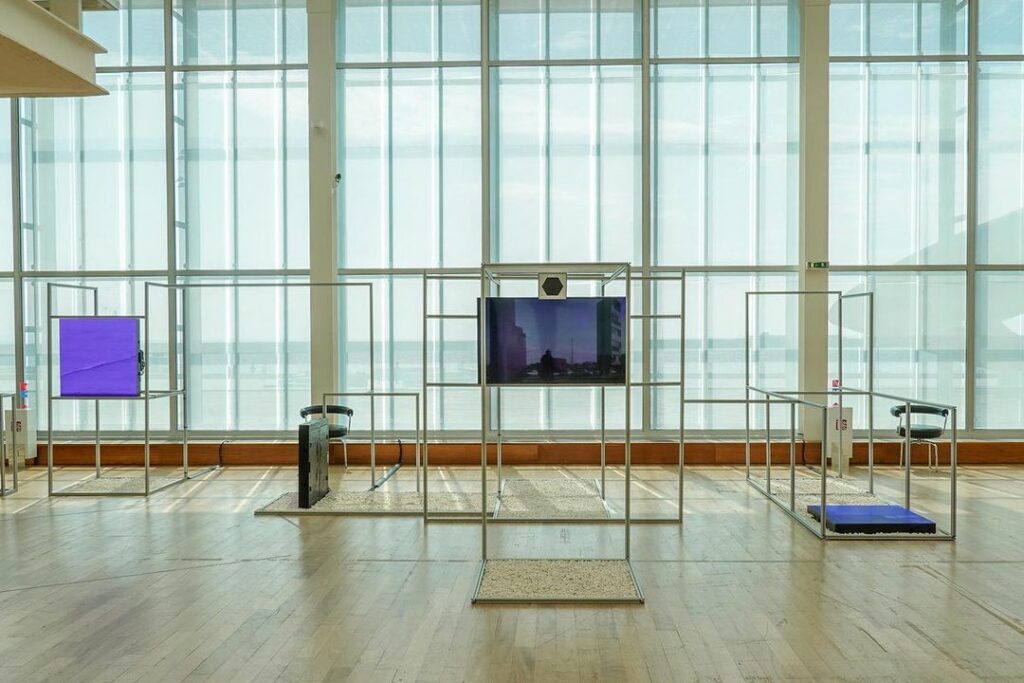Photographier en Normandie (1840-1890) – MUMA, Havre
Du 25/05 au 22/09/2024
https://www.muma-lehavre.fr/fr/expositions/photographier-en-normandie

La ville qui n’existait pas 2: La voix du possible (1974-1986)
Présentée au Musée d’art moderne André Malraux – MuMa, l’exposition « Photographier en Normandie (1840-1890). Un dialogue pionnier entre les arts » a l’ambition de mettre en lumière le rôle décisif qu’a joué la Normandie dans les débuts de la photographie. Exposer des photographies à l’occasion de la 5e édition de Normandie Impressionniste et spécialement pour les 150 ans du mouvement, a tout son sens, tant peinture et photographie ont entretenu des liens étroits, sous-tendus par un esprit d’invention, d’émulation et d’innovation qui présida au renouvellement et à la multiplication des images au XIXe siècle.
L’exposition confronte chefs-d’œuvre de la peinture et de la photographie, des pionniers aux plus grands noms, en passant par les amateurs. Des oeuvres iconiques côtoient des oeuvres rares ou méconnues. La variété des formats et des techniques permet d’appréhender l’extraordinaire foisonnement technique de ces débuts de la photographie. Les tableaux des peintres impressionnistes et pré-impressionnistes émanent des prestigieuses collections du MuMa, du musée d’Orsay, des musées des Beaux-Arts d’Amiens, de Caen, d’Honfleur ou de Lyon (l’on y trouve entre autres Jongkind, Courbet, Dubourg, Boudin, Pissarro, Monet…) aux côtés de photographies d’Hippolyte Bayard, Stéphanie Breton, Hippolyte Fizeau, Gustave Le Gray, Henri Le Secq, des frères Macaire et Warnod, John Ruskin, William Henry Fox Talbot… Près de deux cents œuvres sont à découvrir.
Terrain d’expérimentation et d’innovation pour les plus grands photographes dès les années 1840, qu’ils soient inventeurs ou artistes, la Normandie est le lieu idéal pour mesurer l’influence réciproque des arts. La photographie enregistre un riche patrimoine dont on mesure alors la fragilité et l’importance, suit les progrès de la transformation des côtes par l’architecture balnéaire et l’arrivée de riches estivants, recherche le pittoresque des campagnes, s’attaque aux scènes de genre et aux vues maritimes affirmant très clairement ses ambitions artistiques.
La période couverte par l’exposition s’étend des premières années où furent divulguées les techniques photographiques, jusqu’à l’aube d’une ère nouvelle, celle du cinéma et de la démocratisation de la photographie, via notamment les photo-clubs. L’image animée est alors proche de marquer la fin du siècle, et la création des sociétés photographiques traduit l’accessibilité renouvelée au procédé. Les précurseurs, les professionnels et amateurs éclairés ne sont plus les seuls créateurs d’images. Une autre histoire commence.
Presented at the Musée d’art moderne André Malraux – MuMa, the exhibition “Photographing in Normandy (1840-1890). A pioneering dialogue between the arts” aims to highlight the decisive role played by Normandy in the beginnings of photography. Exhibiting photographs for the 5th edition of Normandie Impressionniste, and especially for the 150th anniversary of the movement, makes perfect sense, given the close links between painting and photography, underpinned by a spirit of invention, emulation and innovation that presided over the renewal and multiplication of images in the 19th century.
The exhibition brings together masterpieces of painting and photography, from pioneers to amateurs to the greatest names. Iconic works rub shoulders with rare or little-known works. The variety of formats and techniques on display reveals the extraordinary technical profusion of the early days of photography. Paintings by Impressionist and pre-impressionist painters come from the prestigious collections of the MuMa, the Musée d’Orsay, the Musée des Beaux-Arts in Amiens, Caen, Honfleur or Lyon (including Jongkind, Courbet, Dubourg, Boudin, Pissarro, Monet… ) alongside photographs by Hippolyte Bayard, Stéphanie Breton, Hippolyte Fizeau, Gustave Le Gray, Henri Le Secq, the Macaire and Warnod brothers, John Ruskin, William Henry Fox Talbot… Nearly two hundred works are on view.
A land of experimentation and innovation for the greatest photographers since the 1840s, whether inventors or artists, Normandy is the ideal place to measure the reciprocal influence of the arts. Photography recorded a rich heritage, the fragility and importance of which were now being fully appreciated, kept pace with the transformation of the coast by seaside architecture and the arrival of wealthy summer visitors, sought out the picturesque countryside, and tackled genre scenes and maritime views, clearly asserting its artistic ambitions.
The period covered by the exhibition extends from the early years, when photographic techniques were first disseminated, to the dawn of a new era, that of cinema and the democratization of photography, via photo-clubs in particular. The moving image was close to marking the end of the century, and the creation of photographic societies reflected the renewed accessibility of the process. Precursors, professionals and enlightened amateurs were no longer the only creators of images. Another story begins.
